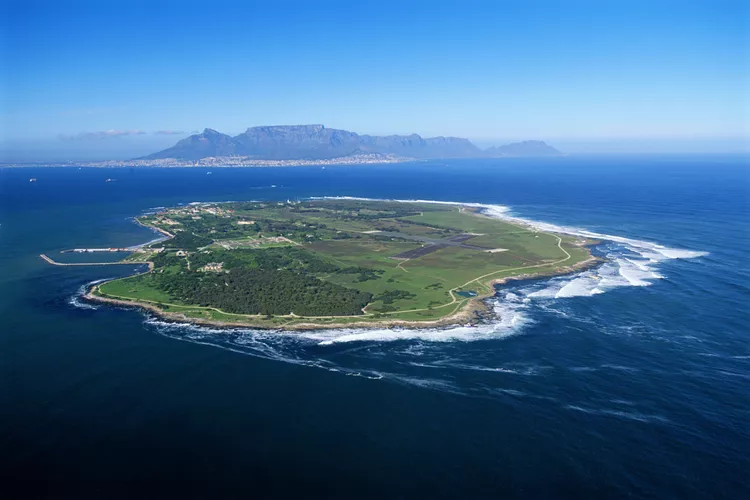Summary
A Guide to Visiting South Africa’s Robben Island
Located in Cape Town’s Table Bay, Robben Island is one of South Africa’s top historical attractions. For centuries it was used as a penal colony, predominantly for political prisoners. Although its maximum security prisons have now closed, the island is famously known as the place where former South African president Nelson Mandela was imprisoned for 18 years. Many prominent members of political parties like the PAC and ANC were also held there alongside him.
In 1997 Robben Island transitioned into a museum, and in 1999 it was designated as a UNESCO World Heritage Site. It now serves as a significant symbol for a new South Africa, showcasing the triumph of democracy over apartheid and the ongoing quest for racial tolerance. Tourists can partake in a Robben Island tour, led by former inmates who provide invaluable insights about their life experiences in the prison.
Getting There
Robben Island is located several kilometers offshore, with all tours commencing with a ferry ride from Cape Town’s V&A Waterfront. The journey takes approximately 30 minutes, allowing plenty of time to admire spectacular views of Cape Town and Table Mountain, as well as to spot whales, dolphins, penguins, and fur seals that inhabit Table Bay. The crossing can be quite turbulent; therefore, individuals prone to seasickness are advised to take preventive tablets. In the event of severe weather, ferry services will be suspended, and tours will be canceled.
Touring the Island
The experience begins with an hour-long bus tour of the island. During this portion, your guide will elaborate on the island’s history and ecology, including its previous uses as a military base and leper colony. You will disembark at the limestone quarry where Nelson Mandela and other notable ANC members endured years of hard labor. While at the quarry, the guide will highlight the cave that doubled as prisoners’ restroom facilities.
Interestingly, it was in this cave that some of the more educated inmates taught others how to read and write by etching in the dirt. Subjects like history, politics, and biology were among the topics explored in what was colloquially referred to as the “prison university.” It is believed that a substantial portion of South Africa’s current constitution was conceptualized there. This cave served as one of the few places where prisoners could escape the constant surveillance of their guards.
The Maximum Security Prison
After the bus tour, your guide will escort you to the maximum security prison where over 3,000 political prisoners were held from 1960 to 1991. If your bus guide wasn’t an ex-political prisoner, your guide for this portion of the tour certainly will be. It is profoundly humbling to hear stories of prison life narrated by someone who experienced it firsthand.
The tour commences at the prison entrance where inmates underwent processing, were given prison apparel, and assigned their cells. The prison’s facilities include a court and a censorship office where all correspondence was meticulously reviewed. Additionally, the tour includes a visit to the courtyard where Mandela tended to a small garden and secretly began writing his famous autobiography Long Walk to Freedom.
Experiencing the Cells
During the tour, you will have the opportunity to enter at least one of the communal prison cells. Here, you can observe the bunk beds the prisoners used and feel the extremely thin mats and blankets provided to them. In one cell block, there is a preserved sign displaying the prisoners’ daily menu, showcasing the stark food portioning based on skin color—a stark representation of apartheid-era racism.
You will also be guided to the specific cell in which Mandela lived for a portion of his imprisonment. It is notable that prisoners were frequently relocated for security reasons. Even though communication between the communal blocks was strictly prohibited, your guide will recount how inmates devised inventive strategies to continue their struggle for freedom from within the prison walls.
Practical Information
The entire tour lasts about 3.5 hours, including the ferry trip to and from Robben Island. Tickets can be acquired online or purchased directly at ticket counters located at the Nelson Mandela Gateway on the V&A Waterfront. The tour costs R360 per adult (approximately $25) and R200 per child (approximately $15). Due to high demand, it is advisable to secure your tickets in advance or consult with a local tour operator for assistance.
The Robben Island ferry operates four times daily from the Nelson Mandela Gateway, with departure times varying according to the season. Ensure that you arrive at least 20 minutes prior to your scheduled departure, as there is an informative exhibit in the waiting hall that provides an insightful overview of the island’s history. Keep in mind that while the guides on Robben Island will never solicit tips, it is customary in Africa to reward good service.





